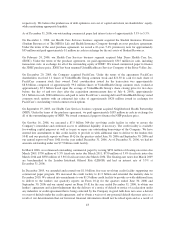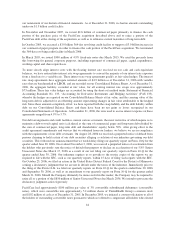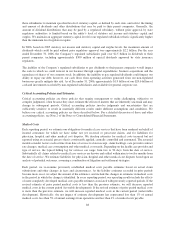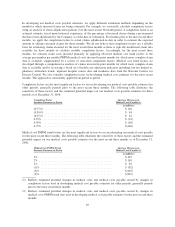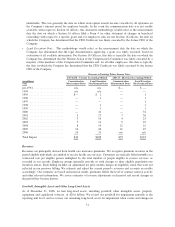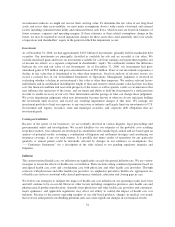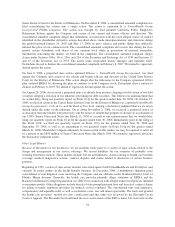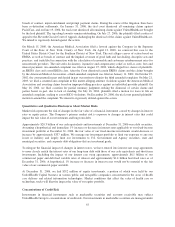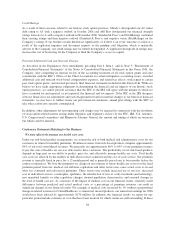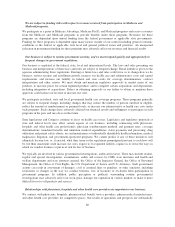United Healthcare 2006 Annual Report Download - page 54
Download and view the complete annual report
Please find page 54 of the 2006 United Healthcare annual report below. You can navigate through the pages in the report by either clicking on the pages listed below, or by using the keyword search tool below to find specific information within the annual report.circumstances indicate we might not recover their carrying value. To determine the fair value of our long-lived
assets and assess their recoverability, we must make assumptions about a wide variety of internal and external
factors including estimated future utility and estimated future cash flows, which in turn are based on estimates of
future revenues, expenses and operating margins. If these estimates or their related assumptions change in the
future, we may be required to record impairment charges for these assets that could materially affect our results
of operations and shareholders’ equity in the period in which the impairment occurs.
Investments
As of December 31, 2006, we had approximately $10.3 billion of investments, primarily held in marketable debt
securities. Our investments are principally classified as available for sale and are recorded at fair value. We
exclude unrealized gains and losses on investments available for sale from earnings and report them together, net
of income tax effects, as a separate component in shareholders’ equity. We continually monitor the difference
between the cost and fair value of our investments. As of December 31, 2006, our investments had gross
unrealized gains of $79 million and gross unrealized losses of $53 million. If any of our investments experience a
decline in fair value that is determined to be other than temporary, based on analysis of relevant factors, we
record a realized loss in our Consolidated Statements of Operations. Management judgment is involved in
evaluating whether a decline in an investment’s fair value is other than temporary. We analyze relevant factors
individually and in combination including the length of time and extent to which market value has been less than
cost, the financial condition and near-term prospects of the issuer as well as specific events or circumstances that
may influence the operations of the issuer, and our intent and ability to hold the investment for a sufficient time
in order to enable recovery of our cost. New information and the passage of time can change these judgments.
We revise impairment judgments when new information becomes known or when we do not anticipate holding
the investment until recovery and record any resulting impairment charges at that time. We manage our
investment portfolio to limit our exposure to any one issuer or industry and largely limit our investments to U.S.
Government and Agency securities, state and municipal securities, and corporate debt obligations that are
investment grade.
Contingent Liabilities
Because of the nature of our businesses, we are routinely involved in various disputes, legal proceedings and
governmental audits and investigations. We record liabilities for our estimates of the probable costs resulting
from these matters. Our estimates are developed in consultation with outside legal counsel and are based upon an
analysis of potential results, assuming a combination of litigation and settlement strategies and considering our
insurance coverage, if any, for such matters. It is possible that future results of operations for any particular
quarterly or annual period could be materially affected by changes in our estimates or assumptions. See
“— Cautionary Statements” for a description of the risks related to our pending regulatory inquiries and
litigation.
Inflation
The current national health care cost inflation rate significantly exceeds the general inflation rate. We use various
strategies to lessen the effects of health care cost inflation. These include setting commercial premiums based on
anticipated health care costs and coordinating care with physicians and other health care providers. Through
contracts with physicians and other health care providers, we emphasize preventive health care, appropriate use
of health care services consistent with clinical performance standards, education and closing gaps in care.
We believe our strategies to mitigate the impact of health care cost inflation on our operating results have been
and will continue to be successful. However, other factors including competitive pressures, new health care and
pharmaceutical product introductions, demands from physicians and other health care providers and consumers,
major epidemics, and applicable regulations may affect our ability to control the impact of health care cost
inflation. Because of the narrow operating margins of our risk-based products, changes in medical cost trends
that were not anticipated in establishing premium rates can create significant changes in our financial results.
52



